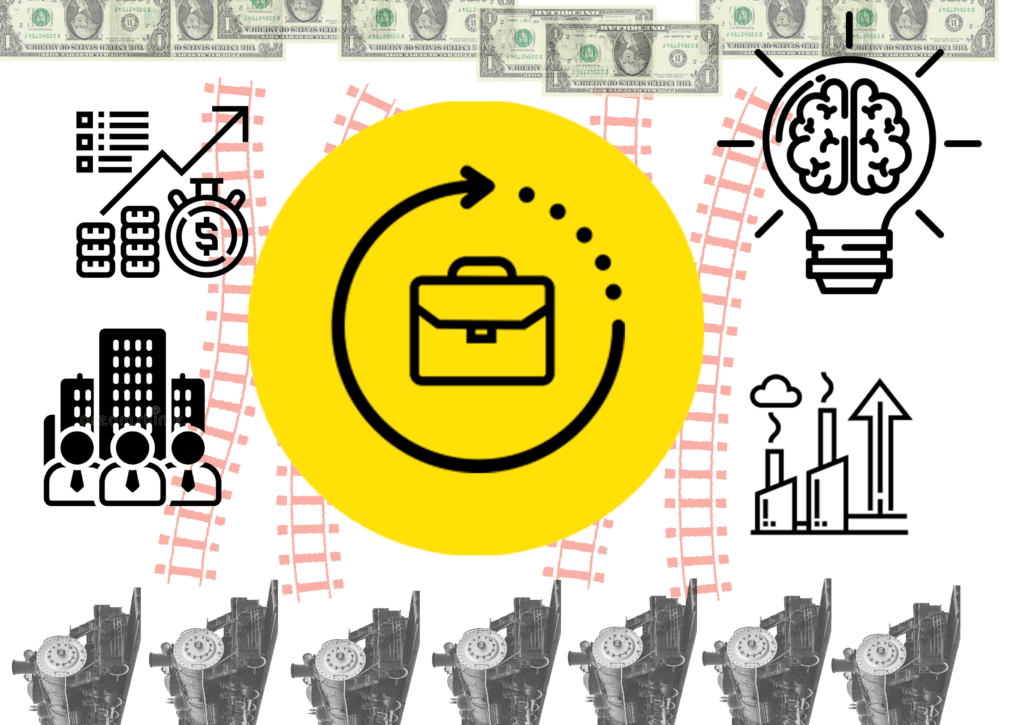The African Union (AU) has dreamed a dream. A very nice dream.
The AU dream, by 2063 the continent will be a ‘United Africa’, where
“The political unity of Africa will be the culmination of the integration process, which includes the free movement of people and the establishment of continental institutions, leading to full economic integration.”

It wasn’t so long ago that much of Africa was united by nightmare. During the ‘Great African War’ centered in the Democratic Republic of Congo (1998 to 2003) nine countries and 25 armed groups were united in a spree of resource-looting that caused more than five million deaths. From bloody carnage to a dream centered around an Africa that is,
“integrated, united, peaceful, sovereign, independent, confident and self-reliant.”
There is a contemporary practical relevance to this dream. In a now dusty and forgotten blog (published a couple of weeks ago) this same author argued that a Pan-African vision of the AU is needed to maximize the benefits of Chinese-financed railway construction, He concluded,
“Africa needs a new vision for this age of coal, copper, and cobalt laden Chinese railways, to pool sovereignty at the national level to better retain African sovereignty at the continental level.”
The dream is very nice and tinged with hard-headed practicality.
*Interlude*
Dear reader, please permit me a brief digression on methodology.
Methodology???
This is a blog!

Please don’t deter your limited audience by going all ‘academic’’ (said with a slight sneer) on us!
Ok! Ok! It is a fun methodology, I promise.
Sigh!
Assuming you have stumbled on this blog by the slip of greasy-fingered typing error and have no intention of reading the four-part infrastructure series (See Canals, Railways, and Walls), let me alert you to the context and methodological basis of this series.
The context – there is a new Railway Renaissance in Africa. The African Development Bank (AfDB), the World Bank (WB), the US government, and especially the Chinese inspired Belt and Road Initiative (BRI) have all promised financial backing. The trains have started running. In 2017 the $3.8 billion 480 km line from Nairobi to Mombasa (Kenya) and $4.5 billion line from Addis Ababa (Ethiopia) to Djibouti were both inaugurated. In September 2021 Egypt signed an $8.7 billion deal with the German company Siemens to build a 1,800 km electric railway between the Red Sea and the Mediterranean where trains would link 60 cities and reach a top speed of 250 km per hour. High speed trains are already whishing through Morocco, Nigeria, and Tunisia.
The methodology – lessons from history. We can learn about the likely economic impact of railways in contemporary Africa by looking back and learning from history. The history of pioneering railways in Britain, the Transcontinental Railway in the US, the Trans-Siberian Railway in Russia, the colonial built railways in India, and the independent nation-building railways of Brazil, Japan and Mexico, and all the way to contemporary high-speed railways in China.
*End Interlude*
The AU vision is not just about the trains that connect up all the major cities of Africa and coastal countries to ports. The AU vision is about deep integration: Travel liberated by trains, roads, and air-flight, by visa-free people-travel, and by the free movement of goods and services. In 2018 for example, under the approving gaze of the AU, 44 countries signed the African Continental Free Trade Area (AfCFTA) committing themselves to end cross-border tariffs.
Economics tells us that if implemented the AU vision will create both winners and losers.
There are winners. Firms and workers derive benefits from being in close geographical proximity. In Ethiopia for example it makes sense for those with skills in leather footwear to live near a leather factory. In turn this means new leather footwear factories are more likely to open near the growing pool of skilled labor. A close location makes it easier for managers, researchers and workers to exchange ideas about production and technology. This knowledge exchange increases the productivity of firms and workers. There are legendary coffee shops in America’s Silicon Valley that created billions of innovation dollars. Together these effects are called agglomeration externalities. Productivity, wages, tax revenue, employment, innovation and industrialization may spiral upwards in coastal Dar es Salaam and Nairobi.
There are losers. Workers and firms have to abandon another location – agglomeration externalities work in reverse. The migration of skilled workers will reduce the incentive of factories to remain in the city. The loss of factories will further tempt migrants onto those newly built trains with a one-way ticket out. The loss of workers and firms will dry-up knowledge spillovers. Smart coffee machines will hiss happily no more. Productivity, wages, tax revenue, employment, innovation and industrialization may spiral downwards in landlocked Lusaka and Lilongwe.

History tells us the politics is real and biting.
Railways create new wealth and destroy existing wealth. In Britain 40 coach services that ran through Northampton daily all closed within six months of a local railway opening. In Sweden and Japan newly built railways induced people and factories to relocate from cities not connected by railway. In nineteenth century India when a district was connected to the railway its own income rose but income in neighboring districts declined. In China to maintain speeds of +200 km per hour high-speed trains (HSR) only stop at populous urban areas and not small cities. Around 3,000 (from 6,100) passenger train stops in China were abandoned in the decade after HSR construction began. Big cities boomed, but those unfortunate cities that watched the HSR whizz through without stopping saw declining incomes.
This is the big politics that the AU has ignored in its vision for 2063. Will the benefits of integration-induced economic growth be highly unequal?
How have other regions coped?
Some regions manage the politics with migration. In nineteenth century America coastal areas (New York) were wealthier than inland areas (Alabama). In the twentieth century American automobile manufacturing declined (Detroit) and new technology cities boomed (Seattle or Houston). In China economic reforms from the late-1970s generated rapid economic growth centered in the coastal regions. The US and China cope by migration. People follow wealth. In the US every decade a quarter of the population changes its state of residence. In China over the 1980s and 1990s around 100 million people migrated from inland to coastal China. Migration is relatively easy within a single country. The 50+ countries of Africa face much greater challenges. Despite the AU aspiration of visa-free travel, Africa is not politically prepared to accommodate tens of millions of people crossing borders looking for employment. Witness for example the lethal electrified fence South Africa has been constructing on its border with neighbors Mozambique and Zimbabwe since the mid-1980s.
The European Union (EU) do allow freedom of movement and right of residence across member countries. Even in the EU differences in language and culture and also bureaucratic constraints hinder migration. In comparison to the U.S. or China there is less intra-EU migration in response to economic incentives like wage differentials. As the poor don’t migrate to the rich areas the EU brings wealth to the poor. Between 2021 and 2017 the EU has budgeted spending of around $400 billion to invest in the social and economic development of backward regions. By comparison the AU budget in 2021 was around $620 million. Africa has not proved amenable to better funding the AU. In 2020 only 17 countries across Africa were in the process of implementing a 0.2% levy on imports to generate finance for the AU. By 2020 the levy had raised just over $7million and contributing countries were $25million in arrears.
The AU are relying on a dream mixed with moral exhortation, they call for
“Changed attitudes and mind-sets, to rekindle and strengthen Pan-African values of self-reliance, solidarity, hard work and collective prosperity”
Politicians in those cities, regions, and countries being squeezed by a vicious cycle of agglomeration externalities working in reverse won’t care about a nebulous appeal to ‘collective prosperity’ There is no collective prosperity. There are winners and there are losers. There is wealth and there is poverty.
The AU needs more than a dream to deal with the real political consequences of integration.







